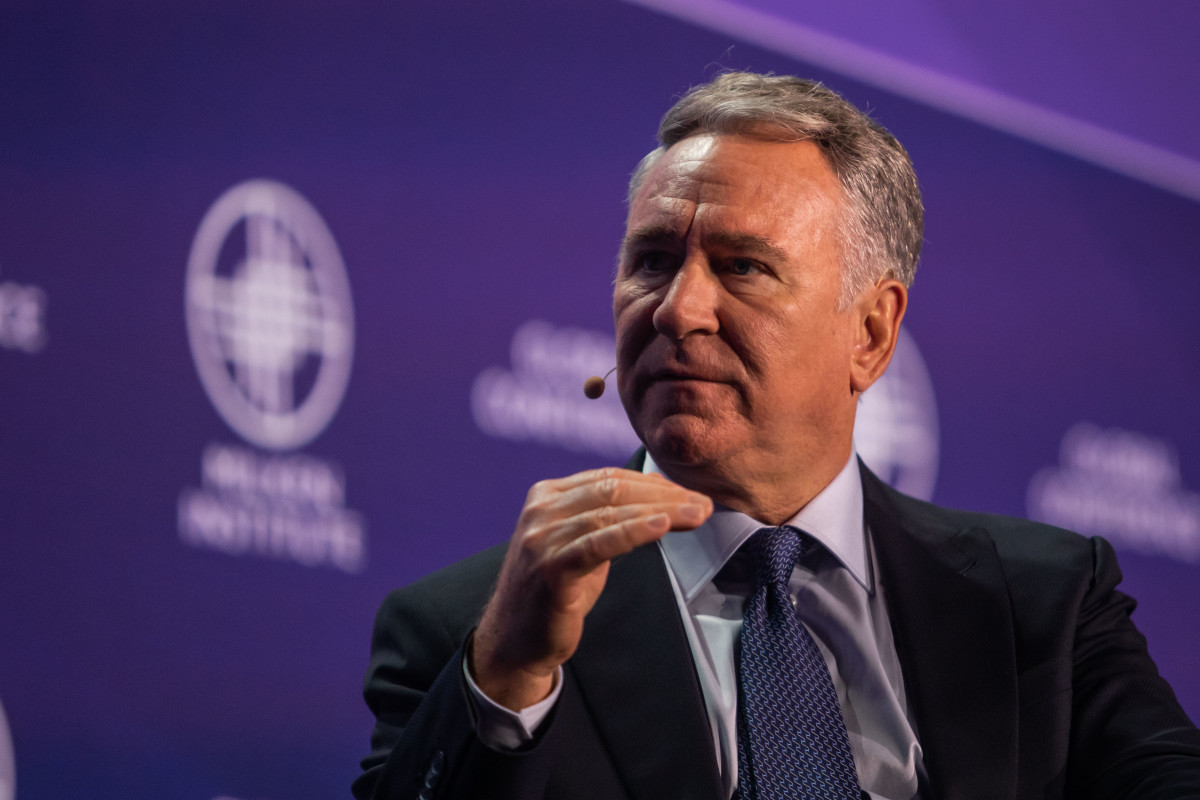
Hedge fund manager Ken Griffin, chief executive of Citadel, has carved out a legendary status for himself in the finance industry.
His investing success goes back at least to his college days at Harvard, where he made successful stock and convertible bond plays. Griffin, 55, is now worth $37 billion, according to Forbes.
He also founded Citadel Securities, a market maker, that handles about 20% of stock trades. And he’s a major philanthropist, with total donations of more than $2 billion.
So when Griffin talks, people listen, and he had some things to say about Federal Reserve policy on May 6.

What’s ahead for the Federal Reserve?
At the beginning of the year, futures traders anticipated six interest-rate cuts from the Federal Reserve this year. That’s because inflation was sliding, and it looked like economic growth would do the same.
But now that inflation has proven to be sticky and the economy has remained strong, The CME FedWatch tool points to only two rate reductions in 2024. The Fed’s target for the federal funds rate on interbank overnight bank loans is now 5.25% to 5.5%.
The last forecast from Fed officials came in March when the median prediction was for three rate cuts this year. That number could well go down in the central bank’s June forecast.
Related: Ex-Treasury official unveils startling interest rate outlook
Some economists, notably Torsten Slok of Apollo Global Management, began predicting in March that the Fed wouldn’t move this year.
And Harvard economist Larry Summers, former Treasury secretary, has even said there’s a 15%-25% chance that the Fed’s next move will be to raise rates.
Interest rates are vitally important to individuals, of course. Higher rates mean higher income payouts from savings accounts, money-market funds, and bonds. But they also mean higher payments for mortgage, credit card, auto, student, and general loans.
Ken Griffin’s view of Fed policy
Griffin has been saying for the past couple of months that the Fed was right to leave rates at their elevated level. The central bank hasn’t changed rates since it increased them last July, capping 11 rate hikes in a row.
“Wage growth is sticky, core inflation is sticky, de-globalization is happening — that takes away from the constant deflationary trend … for most of our adult lifetime,” Griffin said at the Milken Institute Global Conference in Los Angeles.
More Economic Analysis:
- Watch out for 8% mortgage rates
- Hot inflation report batters stocks; here's what happens next
- Inflation report will disappoint markets (and the Fed)
He projects a rate cut in September or December but said it’s not a sure thing. “There is still a question of will inflation actually decelerate enough by then.”
Investment opportunities in bonds
If Griffin is right that the Fed will be cautious about cutting rates. Now could be an ideal time to buy bonds, which carry their highest yields in 15 years. They also complement your stock portfolio, providing diversification.
“What owning bonds does is it gives you the positioning for a scenario where the economy goes into recession and risk is off,” i.e., stocks fall, said Chris Alwine, Vanguard’s global head of credit.
“In typical recessions, equities fall maybe up to 30%... That's where bonds come into play as a diversifier to equities, but also producing very respectable income today.”
Related: Should you buy bonds now? Here's what Vanguard thinks
Stocks historically outperform bonds, but if Griffin proves correct that the Fed won’t lower rates until September or December, you may have plenty of time to buy bonds with attractive yields.
Acquiring Treasuries and/or investment-grade corporate bonds (those that are unlikely to default) may provide a good, safe entry into the bond market.
The five-year Treasury yielded 4.47% Tuesday, and a five-year single-A-minus Bank of America bond yielded 5.5%.
Related: Veteran fund manager picks favorite stocks for 2024







